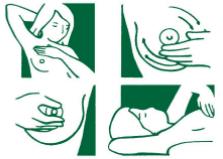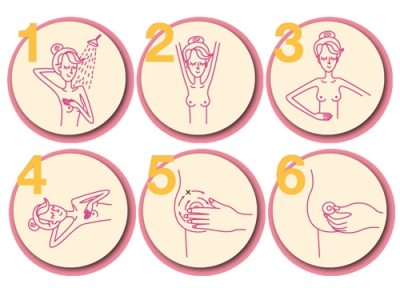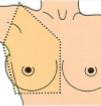There are several methods as follows:
Examination by medical experts
The doctor will palpate the breasts and around the armpits to check for any lumps or abnormal lymph node as well as other abnormalities such as skin dimpling, lymph nodes that feel harder than normal, abnormal retraction of the nipples, as well as the discharge of fluid such as pus-like fluid or bloody fluid from the nipples
Mammography
This method takes x-ray of the breasts to assist the doctor in the diagnosis of breast cancer. The x-ray will show details of the abnormalities including any very tiny growth that cannot be detected by palpation of the breast, in particular in elderly women.
Studies show that the mammogram is an effective method in detecting early stage of breast cancer. Therefore women between 40-50 years old, who are in the high risk group for breast cancer, should get the examination every 1-2 years. Women who are over 50 years old are in the higher risk group and they should get the examination every year.
- Mammogram should be performed after the menstrual period
- During the x-ray process, the breast is compressed firmly against the film in order to get the clearest picture, so you will feel some soreness in the breast
- Mammogram can detect growths which cannot be detected by palpating the breast, however there may be only 10% of the lumps that you can feel by palpating which cannot be seen in the x-ray
Ultrasound of the breast
Today, combining mammogram with ultrasound is common for examining and diagnosing breast cancer.
- Ultrasound can diagnose if the lump is a fluid filled sac or muscle growth
- Ultrasound is suitable for patients with small breasts or patients during their childbearing period (with heavy breasts or breasts full of mammary glands) and patients with augmented breasts
- Ultrasound is suitable for pregnant women who want to avoid x-ray radiation
The use of Ultrasound in conjunction with Mammogram to detect breast cancer will result in a much more accurate diagnosis.






